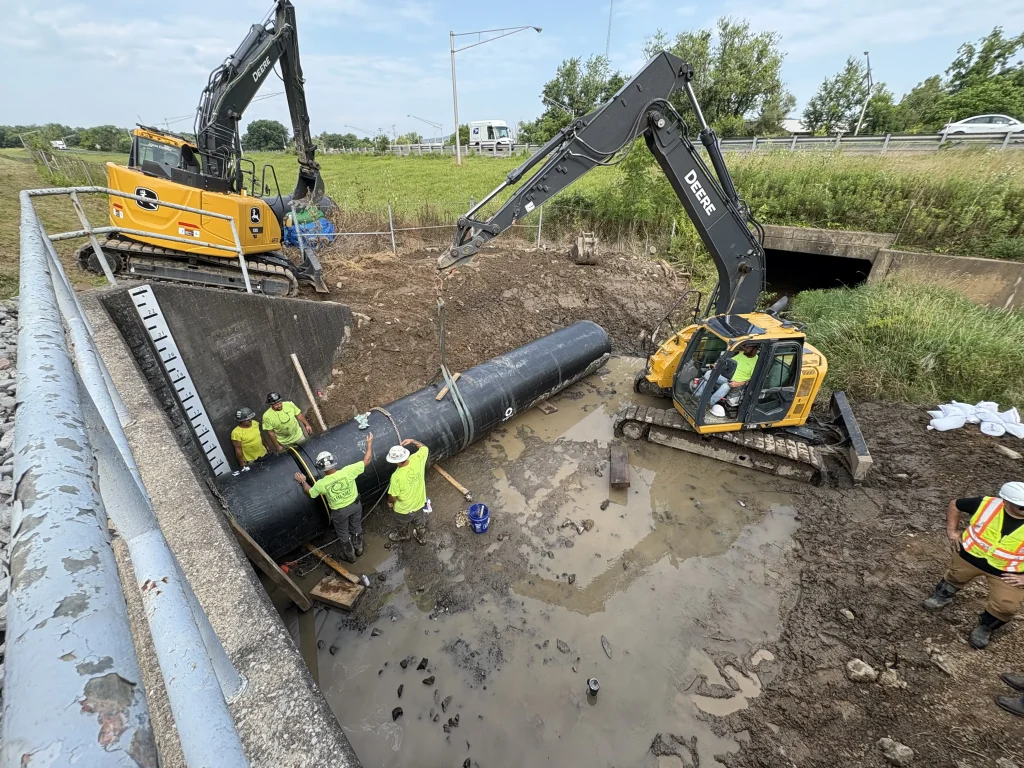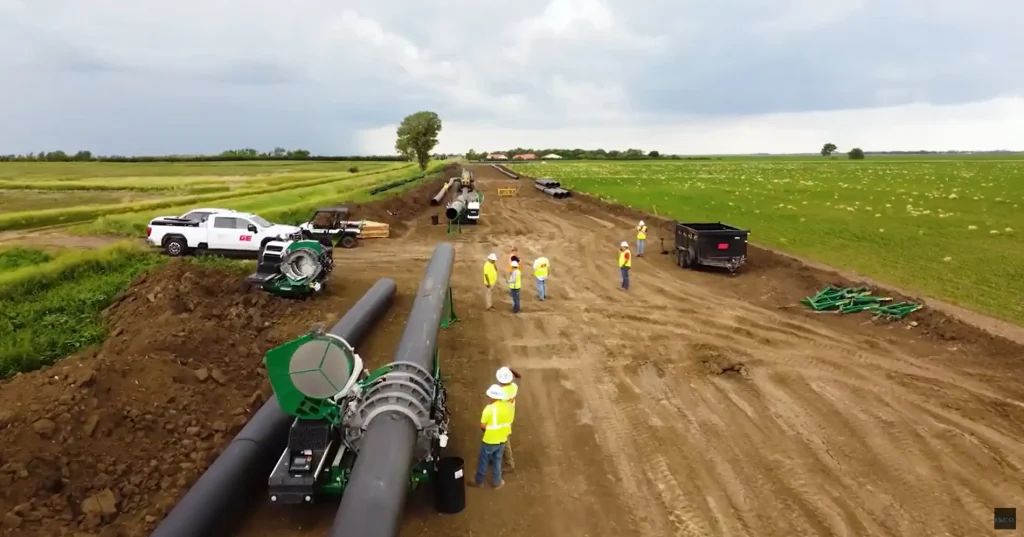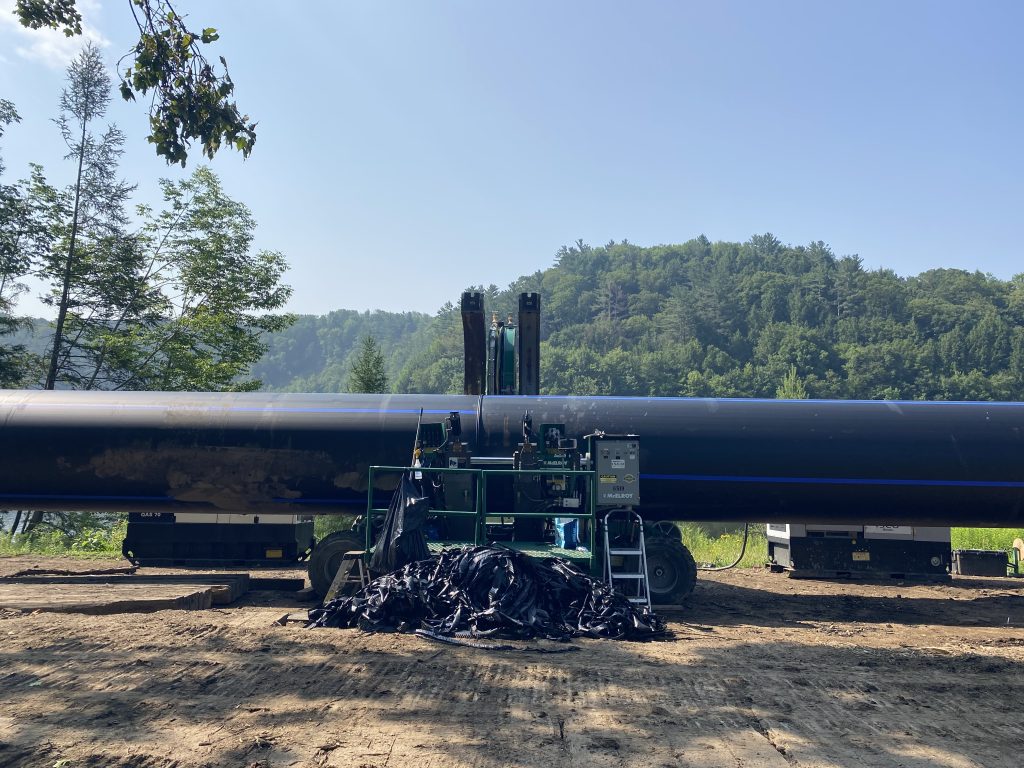Resources
Field Reports
Mississippi DOT District Relines Culvert with Snap-Tite® Pipe
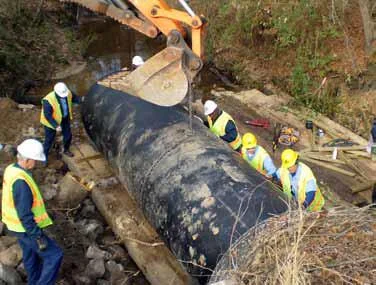
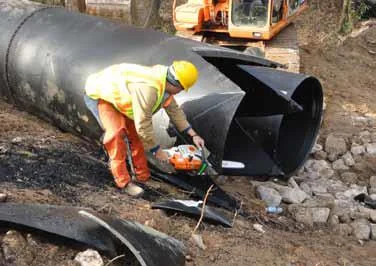
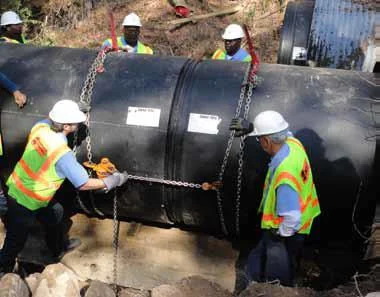
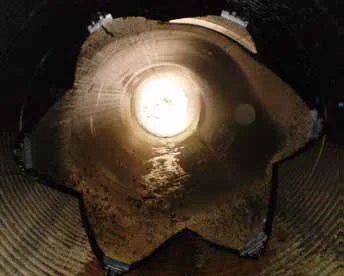
The Problem
Many culverts in the United States were installed 40 to 50 years ago and now have exceeded their design life and need repair. In this case, two 72-inch diameter corrugated metal pipe (CMP) culverts in White Oak, Mississippi started to fail. The Mississippi Department of Transportation (DOT) District Seven feared that the road might collapse if the culverts were not repaired in a timely manner. Shutting down and digging up the road to fix the problem was not an option as it would detour traffic 15-20 miles away from the public’s normal driving route.
The Solution
Matt Dugas, maintenance engineer for the District Seven DOT, met with Snap-Tite® representative Ryan Harrington to determine a viable solution for the culvert repair that would not disturb the road. The DOT chose to reline the old culverts instead of using a dig and replace method. During the initial inspection of the CMP in the fall, it was decided that 63-inch diameter Snap-Tite® pipe was the best size pipe for the project. Another benefit of using the no-dig Snap-Tite® relining method was that the DOT crew could install the Snap-Tite® themselves– saving the district money.
The high-density polyethylene (HDPE) Snap-Tite® pipe has a patented male/female machining at each end of the pipe sections. The machined sections are ‘snapped’ together, piece-by-piece, and pushed into the full length of an existing pipe. Any annular space and voids between the old culvert and new liner are filled in with grout. The pipe liner is available in lengths from two feet to 50 feet, and is available for culverts with diameters from eight inches to 84 inches. Snap-Tite® also meets American Association of State Highway and Transportation Officials (AASHTO) Standard M326 for rehabilitating culverts.
The Installation
The day of the installation, one of the damaged culverts deflected down to only a 59-inch opening. Harrington suggested cutting one end of the Snap-Tite® pipe into a bullet nose, a method used to push a Snap-Tite® liner into a deflected culvert.
On site, the DOT crew cut the bullet nose on one end of a section of Snap-Tite® pipe in order to get it through the deflection of the old pipe. Once the bullet nose pushed through past the deflection point, the rest of the pipe slid through the old pipe with ease.
Then to snap the sections of Snap-Tite® pipe together, the crew only needed to use chains and a come-a-long. There was no specialty equipment required.
“I was amazed with the strength and durability of the Snap-Tite® liner, yet it was flexible enough to conform to the shape of the deflected host pipe,” said Dugas. “We field-cut a bullet-nose with relative ease, and the 63-inch liner slid right through a problem joint with only 59 inches of clearance. The joints are solid, with absolutely no infiltration, and the ease with which they snapped together was unexpected.”
“We experienced a few growing pains during our first snap, but subsequently became rather proficient at the process, accomplishing most snaps in less than 15 minutes, most of which was manipulating the pipe into place and placing chains and come-a-longs,” added Dugas. ”Snap-Tite® is strong yet flexible. The joints are solid and snap together with relative ease. We are pleased with the performance of Snap-Tite® in this application.”
Both culverts were lined in one day and the DOT District Seven did not have to shut down the road, so the local traffic was not detoured and continued to flow normally. This was the first major installation of Snap-Tite® pipe in Mississippi and at the end of one day, it was a success.
